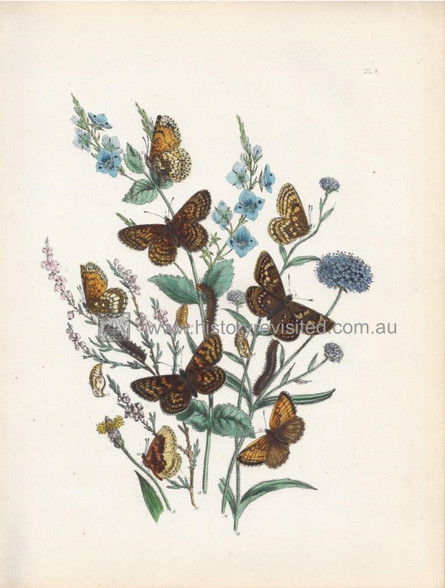 Loading... Please wait...
Loading... Please wait...All prices are in All prices are in AUD
Categories
- Home
- Antique Prints
- Insect Butterflies Humphreys Melitaea Antique Print
- Home
- Antique Prints
- Animal Antique Prints
- Insect Butterflies Humphreys Melitaea Antique Print
- Home
- Antique Prints
- Botanicals Antique Prints
- Ferns/Foliage
- Insect Butterflies Humphreys Melitaea Antique Print
- Home
- Antique Prints
- Botanicals Antique Prints
- Fruits / Herbs
- Insect Butterflies Humphreys Melitaea Antique Print
- Home
- Antique Prints
- Botanicals Antique Prints
- Flowers
- Insect Butterflies Humphreys Melitaea Antique Print
- Home
- Antique Prints
- Animal Antique Prints
- Insects
- Insect Butterflies Humphreys Melitaea Antique Print
- Home
- Antique Prints
- Animal Antique Prints
- Insects
- Humphreys British Butterflies
- Insect Butterflies Humphreys Melitaea Antique Print
Insect Butterflies Humphreys Melitaea Antique Print
Product Description
Insect, Butterflies, Butterfly, H.N. Humphreys, Melitaea, Metamorphosis, caterpillar, chrysalis, Antique Print
Plate 8. Butterflies Melitaea (Glanville Fritillary), Melitaea Artemis (Greasy Fritillary), Melitaea Athalia (Pearl-bordered Likeness) & Melitaea Pyronia Butterflies with respective Male, Female, underside, Caterpillar & Chrysalis.
Plant illustrated: As part of the integrity of illustration Humphreys includes the botanical varieties vital to their life-cycles: Veronica Chamaedrys (Speedwell), Scabiosa succisa (Devil's-bit Scabious), Plantago lanceolata (Ribwort), Calluna vulgaris (common Heath)
Genuine antique hand colored lithograph with applied gum arabic after British naturalist, illustrator and entomologist Henry Noel Humphreys (1810-1879)
Published originally by subscription 1841-49, with species character descriptions by J. O. Westwood, Secretary of the Entomological Society, a revised & corrected New Edition was published by William & Robert Chambers, London & Edinburgh in 1860.
Condition= Excellent. Supplied with copy of original butterfly descriptions.
Image size = 21.5 x 28.5 cm / 8.6 x 11.4 inch
British Museum & Henry Noel Humphreys
As a naturalist and entomologist Humphreys' was most particular that his illustrations layout the comprehensive life cycle transformation from caterpillars to butterflies by virtue of the chrysalis. His method of visually explaining the idea of "metamorphosis" so impressed the British Museum curators that they adopted his meticulous display concept. "The study of natural history is the learning of the characters with which the wonderful story of nature is written; and cannot conceive a more pleasing and natural introduction to its general study than entomology, of which I think the division of Lepidoptera...the most easy and attractive section. " H.N. Humphreys, Esq, 1860
Product Videos
-
 Indra Swallowt...Note: The caterpillars tied themselves to the cardboard with t...
Indra Swallowt...Note: The caterpillars tied themselves to the cardboard with t...












